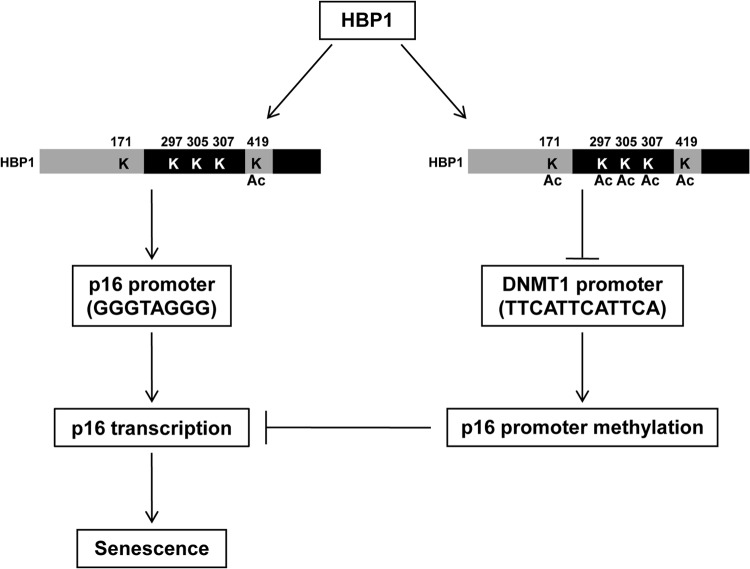Fig 10.
Model for dual HBP1 transcriptional functions in premature senescence. HBP1 has an intricate dual transcriptional regulatory role in senescence. The key features are the requirements for different DNA elements and differential protein acetylation for transcriptional activation or repression—all in the context of enacting premature or replicative senescence. We envision that HBP1 represses the DNMT1 promoter through sequence-specific binding (of the type TTCATTCATTCA) and that the activity of HBP1 itself is regulated through acetylation at any of 5 sites in the protein. Mutation of any acetylation sites abrogates the HBP1 repression activity. The HBP1-mediated repression of the DNMT1 gene then decreases overall DNA methylation. On the p16 gene, HBP1 expression leads to a similar DNA hypomethylation, but HBP1 instead binds to putative HBP1 activation element (of the type GGGTAGGG) to give activation. While HBP1 alone can partially activate the p16 gene, full transcriptional activation of the p16 gene requires hypomethylation and an HBP1 acetylation at K419. The reciprocal partnership of HBP1, DNMT1, and p16 is critical for cellular senescence.

